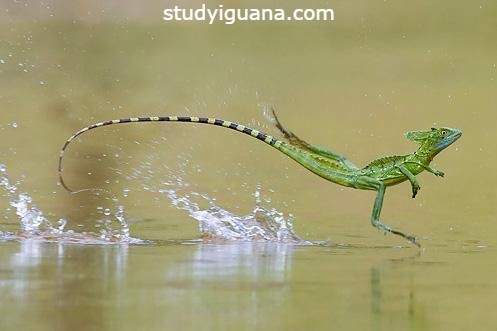How fast can an iguana run? How are Usain Bolt and an iguana alike? Of course, Ni and an iguana have the same velocity! The 2009 World Championships in Berlin marked Bolt’s personal best speed of 27.78 miles per hour. However, the iguana is not slow; it can reach speeds of up to 25 miles per hour. So, don’t take this dragon-like reptile’s bulk for strength. It may seem ungainly, but it moves quickly and deftly on land.
You may be asking, now that you know how quickly an iguana can sprint, when it is appropriate for it to do so. Moreover, will it always be restless if you maintain one as a pet, or if you currently do? Discover the answer by continuing to read!
Why iguanas run fast?
Iguanas don’t run because they don’t have to; they spend all day, every day, in the trees. Most often, this is done to escape a predator that is faster than the iguana and has found its hiding spot. Like its deadly tail, teeth, and nails, the iguana’s speed and agility help it evade predators on the ground and in the air.
The iguana creeps slowly with its legs bent and its tail swinging when it descends from its tree to forage or sunbathe. If threatened, it can leap from its tree to safety, arms and legs extended and tail held steady. It can also get up to speed quickly with its legs erect, tummy up, and tail wagging.
The iguana can also swim well and navigate the water efficiently. It propels itself fast across the surface by swimming with its head up, paws stretched back, and wavy tail. But its land speed is not the same as its water speed.

How fast can an iguana run? Iguana’s Life in the Wild
The green iguana is often stereotyped as a sloth due to the fact that it spends nearly all of its time sedentary. It is hypothesized that just 1% of its life is spent digesting food, while the remaining 2% is spent reproducing. No great effort is required on the part of this large creature to obtain sustenance. When it rains, it eats a lot of food right there, but when it doesn’t, it eats much less.
This means that green iguanas primarily inhabit tree canopies. Further, adult iguanas exhibit extreme territoriality. Typically, a man will defend a single tree as his territory; however, in cases where there are multiple males competing for the same large tree, each male may protect his own “portion” of the tree. The gang can get everything they need from the tree, including shelter, food, and warmth. People relocate for lack of resources even when no immediate threat exists.
Green iguanas spend their whole lives on a single tree, venturing out only on extremely rare occasions to bask on the ground, escape danger by plunging into water or leaping from tree to tree, or, for females, migrate to a specific location to deposit their eggs.
Can Your Iguana Pet Run Away?
It’s highly unlikely that your iguana will want to run around like a crazy person all day to burn off energy unless he escapes from his cage and your dog begins pursuing him. While he may look like a dog, his speed and agility are actually survival traits. On the other hand, baby iguanas are far more energetic and active than their elders. Yet, as they age, they become less active and more content to do nothing all day except rest on their favorite perch.
However, iguanas demand a warm atmosphere (95°F to 100°F), so it’s not a good idea to let them roam freely inside your home. Although iguanas are essentially high-maintenance pets, daily exercise is not one of their requirements.
Running speed of an iguana
Conclusion
Though they are capable of speeds of up to 25 miles per hour, iguanas often prefer to glide through the water. Their main motivation for fleeing is to avoid predators, which they will fight off with ferocity if necessary, using only their formidable tails and sharp claws. Aside from other reptiles, iguanas aren’t as swift as other land creatures. The speed of your cat, for instance, can outrun that of an iguana.
FAQS
Which is the fastest lizard in the world?
The Sonoran black iguana is the fastest lizard on earth and has been recorded running at speeds of up to 30 miles per hour.
How fast does a iguana go?
An Iguana can travel at speeds of up to 21 miles per hour. Where do iguanas live? These lizards are native to Central America and South America in countries like Brazil, Paraguay, and Mexico. They are also native to the islands of the Caribbean and West Indies.
How fast can an iguana swim?
Even though iguanas can swim and are strong swimmers, most species aren’t especially fast. While they are very speedy on land, iguanas typically only swim at speeds of around 1.5 feet per second. This is roughly on par with a human’s average swimming speed.
Do iguanas have feelings?
Green iguana’s (Iguana iguana) were handled to see whether they showed an increase in heart rate, indicative of emotional fever and the presence of emotion. They found that green iguanas have an emotional response to the stressful experience of handling.
What’s the biggest iguana?
Green Iguanas (Iguana iguana) The green iguana is the largest iguana species on Earth!
